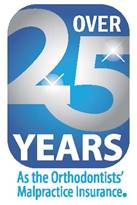You are here
FAQ
One of the goals when AAOIC was established was to return profits to our insureds through dividends. Dividends paid recently have exceeded capital contributions for most policy holders.
What is a Risk Retention Group (RRG)?
A Risk Retention Group is specific type of insurance company formed under federal laws in which policy holders are also the stockholders. This is in contrast to traditional insurance companies which are formed under state laws and where policy holders have no equity in the company. RRG's are limited to insuring businesses or professions of a similar type. RRG's are domiciled in one state and regulated by the laws of that state and are exempt from most regulations in other states. AAOIC is domiciled in Arizona, but provides coverage in all fifty states and the District of Columbia.
Why must I purchase stock in AAOIC?
This small $20 investment is for the purchase of stock that makes you a stockholer in your insurance company. Eventually, when you cancel your policy for whatever reason, AAOIC will buy back your stock at its current value. More importantly, this investment allows you to share in the profits of the company when dividends are issued. This is a significant difference from other insurance companies whose profits are returned to the investors, not the insureds! One of the major goals when AAOIC was established was to return profits to insureds when actuarially prudent.
What is “Tail” coverage?
"Tail" is a slang term for an Extended Reporting Period endorsement on your policy. When you cancel your claims-made malpractice coverage for whatever reason, a tail endorsement provides coverage for the rest of your lifetime should someone sue you after the policy terminates.
If your current policy is an occurrence policy, you do not need tail coverage as you are covered for any claim that occurred while the policy was in force regardless of when it was reported, so there is no need to purchase anything. You can easily switch to the AAO Plan and purchase either a claims-made or occurrence policy without any concern.
If your current coverage is a claims-made policy and there have been no breaks in coverage, you may apply for the AAOIC claims-made policy without purchasing tail coverage. Subject to underwriting, our claims-made policy will extend coverage retroactively to the date you started your claims-made coverage with the previous company (retroactive date), thereby alleviating that company of any liability for the period of time you were insured with them. Then, if you stay with the AAOIC plan for four years and reach the age of 50, the AAOIC plan automatically gives you lifetime tail coverage at no charge back to that original retroactive date. Tail coverage is also free upon death or total permanent disability regardless of age.
What is a retroactive date?
It is the earliest date from which you have had continuous malpractice coverage with no gaps. This coverage may have been with more than one insurance company.
When will my AAOIC coverage become effective?
You may indicate on your application when you want your coverage to begin. Ideally, your effective date should be the day you start practicing, or the day your current policy is terminated. For coverage to be effective you must pay at least 25% of the total annual premium, 100% of the Capital Contribution and 100% of the Patient Compensation Fund Surcharge if applicable.
Your effective date is predicated on approval by the AAOIC Underwriting Department. A review of your application can only begin after the underwriter receives a completed application (and other required forms) and a check for at least 25% of the total annual premium.
Do I need separate limits of coverage for my corporation or partnership?
Remember your corporation or partnership is legally a separate entity from you as an individual. If you are sued, there is a good chance that your corporation or partnership will be named in the lawsuit as a separate party.
Under the AAOIC Plan, your corporation and partnership may be covered for a small additional premium under shared or separate limits of liability when requested on your application. That means you have coverage for yourself and your corporation or partnership up to the limits of your policy.
What does a $1,000,000 / $3,000,000 limit of liability mean?
The first figure ($1,000,000 per claim) is the amount of coverage you have for each individual claim filed against you. The second figure ($3,000,000 aggregate) is the amount the company will pay for multiple claims settled against you in one calendar year.
The AAOIC Plan offers a variety of limit options with the maximum limit of liability being $5,000,000 per single claim and $6,000,000 for multiple claims in the same year.
Who pays for my defense should I be sued?
Unlike some other malpractice policies, the AAOIC plan pays for all defense costs outside the limits of liability. This means that the full amount of the limits you purchased are available to pay any claims.



